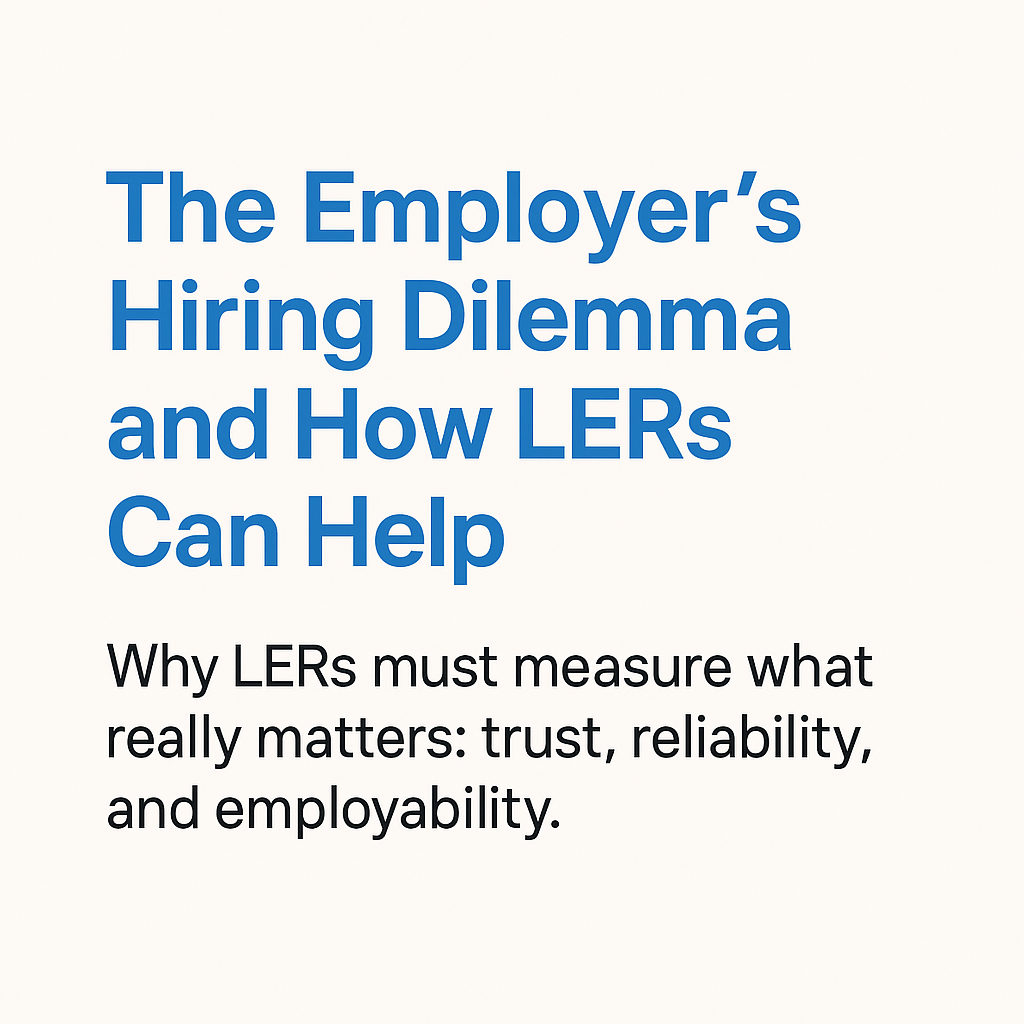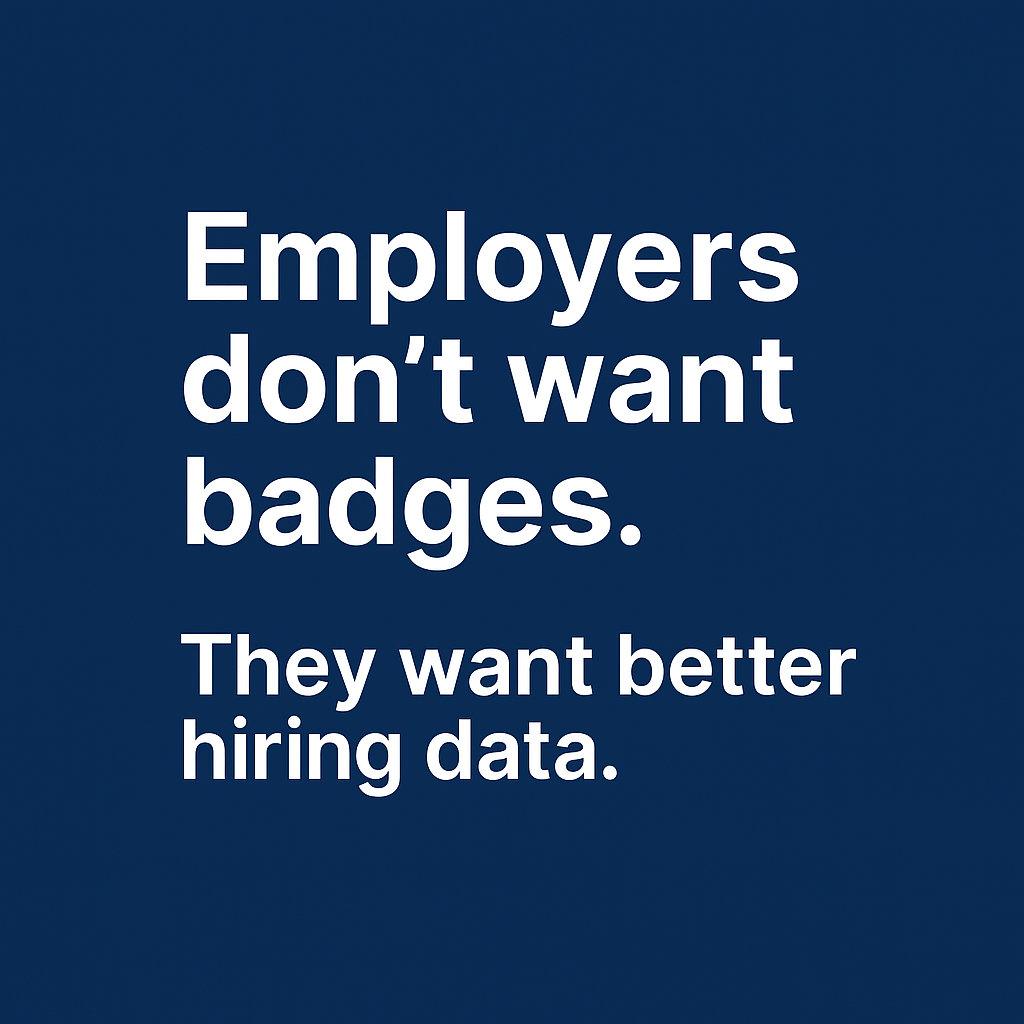Resumes are at the core of how most people find work. Typically, most people will build a resume and then upload it to a job board like Indeed or ZipRecruiter. They may create a lightweight job seeker profile and answer a few questions about what type of job they are looking for.
But what happens next?
On the job seeker side, the job board parses the resume, and tries to break it down into skills.
On the employer posting, they break down the job into the skills required for the role.
Then the job board adds in what the job seeker says they are looking for and determines what roles they should display to encourage the job seeker to apply to. This is called matching.
STOP.
Think about that.
Resumes need to be translated, and job posts need to be translated, in order to match job seekers to the jobs they "should" apply to.
Most resumes contain a few skills in an offhand way but are written with a common formula that lists out work experience with far more weighting than skills, and a "job objective" and education, etc. But really, what a job board is looking for are common denominators to inform their matching algorithms.
Skills are the common denominator.
And if a job seeker isn’t equipped to outline a comprehensive list of their skills they won’t see the jobs they deserve to see.
What percentage of job seekers do we feel are able to accurately write down a comprehensive list of the skills they offer an employer? Could they rank their skills by their level of expertise in each of them?
The truth is that people don't know how to do this.
In fact, many people don't receive any training in writing a resume at all. Google searches are their best hope. And the most common recommendation for a job seeker is to reverse engineer their resume based on the job they want.
And that's because the system is broken.
There are two movements under way right now that have the power to create a much more efficient hiring ecosystem that will bring great benefits to employers and job seekers alike.
A Move To Skills-Based Hiring
The first is Skills Based Hiring - a popular topic at HR and education conferences. I often hear Skills Based Hiring summed up as a movement away from jobs requiring degrees. But it is so much more than that.
Skills Based Hiring is about breaking jobs down into the skills required to fulfill the role at a high level.
And this is beautiful because when you do so you open up the pool of candidates dramatically.
Why post that you are looking to hire a business development associate with three years of business development experience, when what you really want is someone with the skills to bring in new business and beat their quarterly or annual revenue targets?
Those skills may include active listening, persuasiveness, attention to detail, business writing, grit, organization, self discipline, establishing trust, critical thinking, leadership, and more. If you define your job that way you may find that middle school science teachers can make excellent business development associates.
But in order for skills based hiring to thrive we need the second movement that is underway, and that's the Learning and Employment Record movement.
A Utilization Of Learning & Employment Records (LER)
This movement is about equipping people with verifiable data on everything they have learned, all training they have received, skills they have developed, licenses and certifications they have earned and more. They are equipped with this data when they are issued digital credentials packed with data about their various achievements through a lifetime of learning. The issuance of these credentials is happening around the world and is growing rapidly.
No longer will soul searching and self-examination be required to identify one’s skills. Instead digital credential data can be loaded into a job seeker platform to help them translate this data into a skills based profile, that includes all of the data of a traditional resume, but much more. New digital resumes can embed layers of data supporting a job seekers qualification, and make that data verifiable to employers and job and HR technologies in real time.
There is a vast layer of technology that exists between recruiters and job seekers which is used every day to make the hiring process more efficient. This includes job boards, platforms like LinkedIn, resume databases, applicant tracking systems like WorkDay and more.
These platforms leverage advanced algorithms and artificial intelligence to make recommendations to employers and job seekers alike. No longer will these technologies have to rely on the artificially constricted “one page resume” to create value in how people are discovered, recruited, and hired.
We Can Do Better
In a world where data is growing at an exponential rate, the digital credential ecosystem is designed to give individuals agency and control over their data.
They control who can access it and for which purposes.
And as these two movements unfold they will continually be able to derive more value from the data that helps them communicate the competencies and qualifications they will bring to any employer.
Job seekers can participate in these movements by asking for their academic and professional credentials in digital form and by using credential wallets like LearnCard to store that information and platforms like SmartResume to turn these credentials into a Learning and Employment Record and to build their own skills based resume.
Employers can support these movements by leaning into the work of the T3 Innovation Network to create skills based job descriptions. They can attend events like the Digital Credentials Summit or The Badge Summit to learn about these new initiatives and participate in pilot programs. If employers join these movements their actions will catalyze change across the technology and hiring systems to product better results for job seekers and hiring managers alike.
The first resume was written 500 years ago by Leonardo Da Vinci.
With all that has changed since then it is time for a resume renaissance.

.png)








